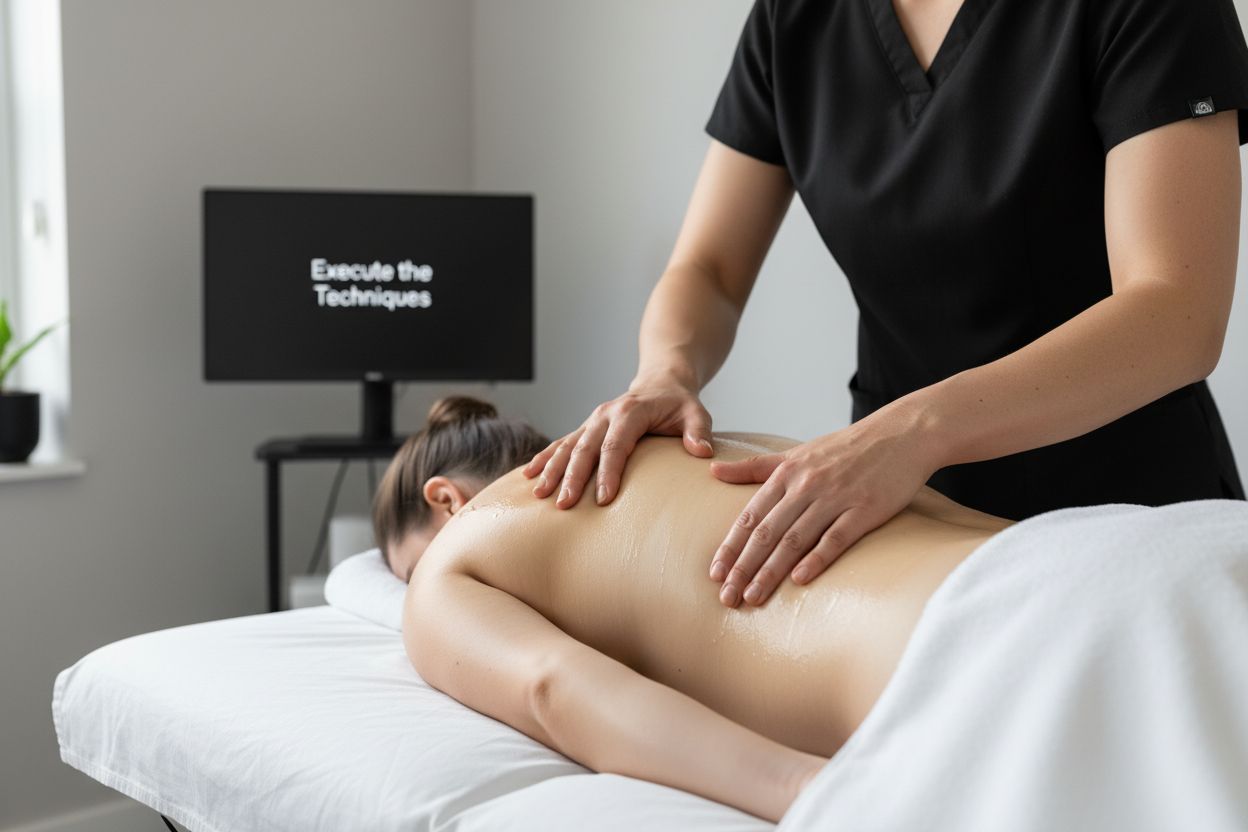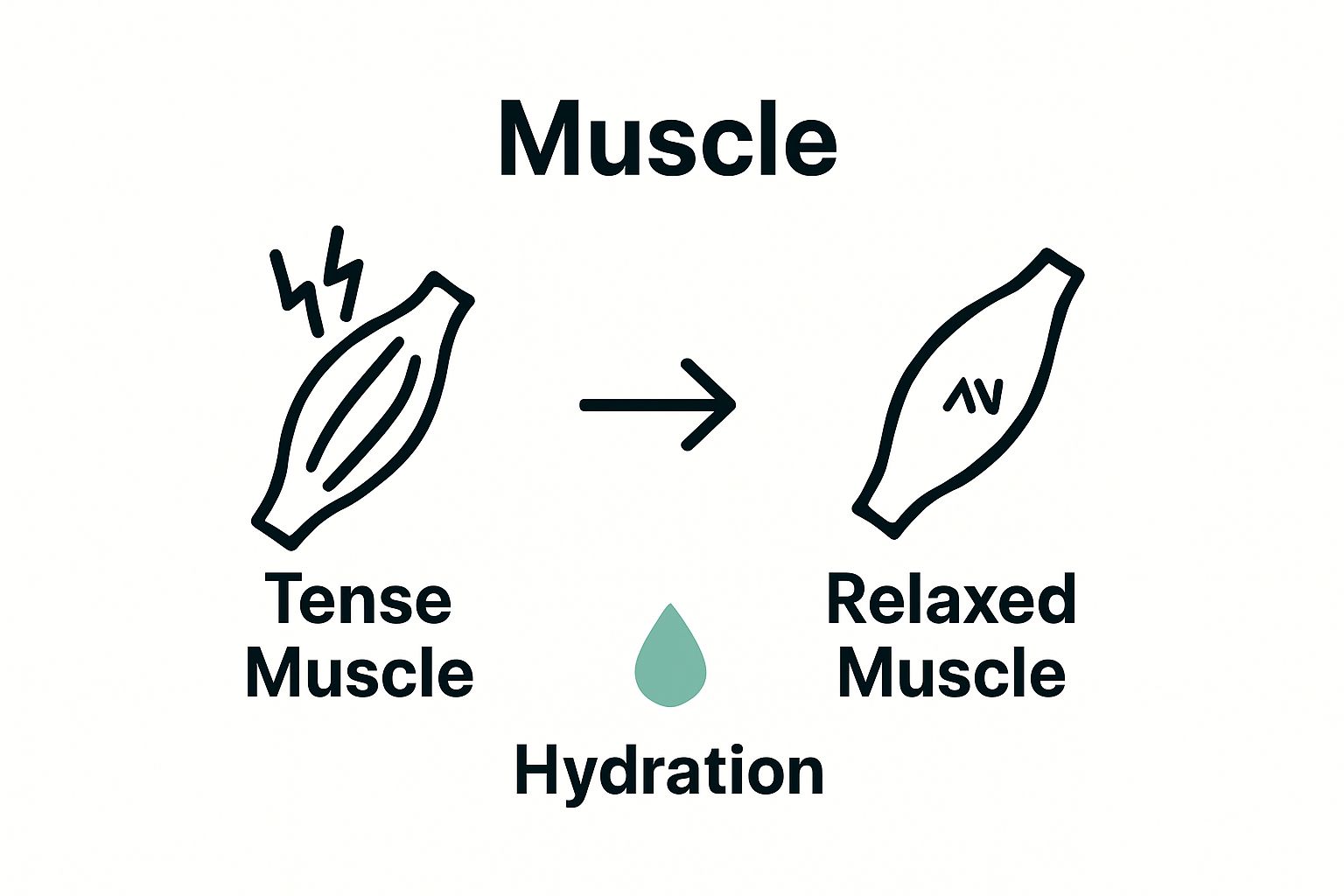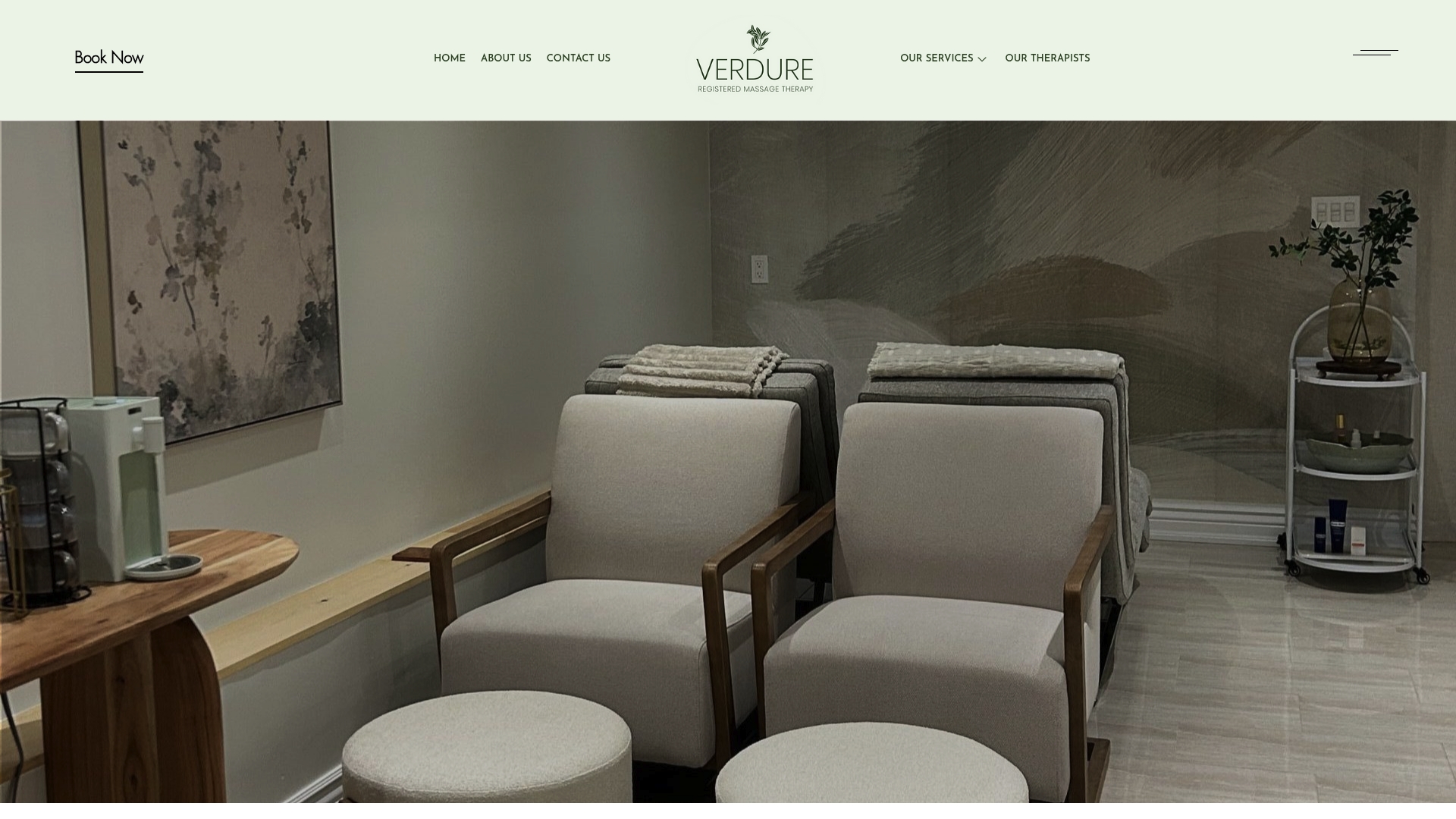Massage therapy has become a go-to solution for anyone feeling the weight of stress or chronic aches. Many just book an appointment and hope for instant relaxation. But most people miss out on the real benefits because they skip one critical step. A personalized assessment makes your massage up to 50 percent more effective compared to random technique selection. Understanding how to tailor every part of your experience can transform a simple rubdown into an ongoing journey of relief and renewal.
Table of Contents
- Step 1: Assess Your Needs For Massage Therapy
- Step 2: Choose The Right Type Of Massage Technique
- Step 3: Prepare Your Space For A Relaxing Experience
- Step 4: Execute The Massage Techniques Properly
- Step 5: Evaluate Your Experience And Follow Up
Quick Summary
| Key Point | Explanation |
|---|---|
| 1. Assess your unique needs for massage | Evaluate specific areas of tension and stress to personalize your massage therapy experience effectively. |
| 2. Choose the right massage technique | Match massage styles with your wellness goals, such as stress relief or muscle recovery, for effective results. |
| 3. Prepare a relaxing environment | Create a comfortable setting with soft lighting, soothing music, and a clean space to enhance relaxation during the massage. |
| 4. Execute techniques with care | Apply proper pressure and movements to promote muscle relaxation and healing, paying attention to comfort levels and body cues. |
| 5. Reflect on your experience | After the session, evaluate changes in muscle tension and emotional well-being to inform future massage choices and enhance benefits. |
Step 1: Assess Your Needs for Massage Therapy
Before diving into massage therapy, understanding your body’s unique requirements is crucial for achieving optimal relaxation and wellness. Everyone experiences tension and stress differently, which means your massage therapy approach must be personalized and intentional. Your initial assessment will serve as the foundation for selecting the most appropriate massage technique and therapeutic strategy.
Begin by conducting a thorough self-evaluation of your physical and mental state. Consider the specific areas where you experience muscle tension, chronic pain, or recurring discomfort. Are you a desk worker struggling with shoulder and neck stiffness? An athlete managing sports-related muscle strain? Or perhaps someone battling ongoing stress and anxiety? Each scenario demands a nuanced approach to massage therapy.
Discover personalized massage strategies that align with your individual wellness goals. When assessing your needs, pay close attention to several critical factors:
- Physical pain locations and intensity
- Stress levels and emotional well-being
- Existing medical conditions or injuries
- Mobility limitations
- Personal comfort preferences
Documenting these details provides your registered massage therapist with invaluable insights. The more specific and transparent you are during this initial assessment, the more tailored and effective your massage therapy experience will become. This isn’t just about identifying problem areas but understanding the interconnected nature of your body’s physical and emotional landscape.
National Center for Complementary and Integrative Health recommends consulting healthcare providers if you have underlying medical conditions that might impact massage therapy. Some conditions require specialized approaches or potential medical clearance before beginning treatment.
Successful assessment means you can articulate your wellness objectives clearly, understand your body’s unique needs, and feel confident about the upcoming massage therapy journey. Your goal is not just temporary relief but sustainable, holistic well-being that addresses both physical tension and mental stress.
Step 2: Choose the Right Type of Massage Technique
Selecting the appropriate massage technique is a critical step in your wellness journey, transforming a simple massage into a targeted therapeutic experience. Different techniques offer unique benefits, addressing specific physical and emotional needs with precision and care. Your goal is to match the massage style perfectly with your individual requirements, creating a personalized approach to healing and relaxation.
Explore massage styles for relaxation and understand how each technique can serve your wellness goals. Swedish massage offers gentle, flowing strokes ideal for overall relaxation and stress reduction. Deep tissue massage targets chronic muscle tension and provides intense relief for those experiencing persistent pain. Sports massage focuses on specific muscle groups, making it perfect for athletes or individuals with targeted muscle recovery needs.
According to research from the National Institutes of Health, massage techniques are not one-size-fits-all. Consider the following key factors when making your selection:
- Your primary wellness objective (stress relief, pain management, muscle recovery)
- Current physical condition and areas of tension
- Pain tolerance and comfort with different pressure levels
- Specific health considerations or medical history
Consultation with a registered massage therapist becomes crucial in this selection process. These professionals can conduct a comprehensive assessment, recommend the most suitable technique, and customize the massage to address your unique physiological needs. They understand the nuanced differences between techniques and can guide you toward the most effective approach.
Verifying your technique selection involves more than just choosing a style. Pay attention to how your body responds during the initial session. A successful massage technique will provide immediate relief, reduce muscle tension, and leave you feeling both relaxed and reinvigorated. Trust your body’s signals and remain open to adjusting your approach if the first technique does not meet your expectations.
Below is a comparison table of common massage techniques, their key benefits, and recommended use cases to help you select the most suitable approach for your needs.
| Massage Technique | Key Benefits | Ideal For |
|---|---|---|
| Swedish Massage | Overall relaxation, stress reduction | Beginners, stress relief |
| Deep Tissue Massage | Intense muscle tension relief, pain relief | Chronic pain, deep muscle knots |
| Sports Massage | Targeted muscle recovery, flexibility | Athletes, sports-related injuries |
| Trigger Point Massage | Relieves localized muscle tightness | Specific points of tension |
| Aromatherapy Massage | Emotional balance, enhanced relaxation | Stress, anxiety, mood improvement |
Remember, choosing the right massage technique is an empowering act of self-care. It demonstrates a proactive commitment to your physical and mental well-being, transforming massage from a luxury experience into a strategic wellness intervention.
Step 3: Prepare Your Space for a Relaxing Experience
Creating the perfect environment for your massage therapy session is just as important as selecting the right technique. Your physical space directly influences your ability to relax, unwind, and fully embrace the therapeutic experience. Think of your preparation as setting the stage for complete mental and physical restoration.
Learn more about relaxation techniques that complement your massage preparation. Start by identifying a quiet, comfortable area where you can minimize external distractions. Temperature plays a crucial role in relaxation, so ensure the space is comfortably warm, typically between 70-75 degrees Fahrenheit. Use soft blankets or a heating pad to maintain body warmth during the massage, which helps muscles remain loose and receptive to therapeutic touch.
According to scientific research, environmental factors significantly impact relaxation. Consider incorporating these sensory elements:
- Soft, ambient lighting or dimmed rooms
- Gentle, calming background music
- Subtle aromatherapy with lavender or chamomile
- Clean, soft textiles and comfortable surfaces
Hydration and physical preparation are equally important. Drink water before your massage to help your muscles become more pliable and support the body’s natural detoxification process. Wear loose, comfortable clothing that can be easily removed or adjusted. If you’re preparing for a professional massage, arrive a few minutes early to transition mentally and physically.
For at-home massages, gather all necessary supplies beforehand. This might include massage oil, towels, a portable massage table or comfortable mat, and any recommended props like bolster pillows for additional support. Removing electronic devices and creating a notification-free zone helps maintain the tranquil atmosphere.
Successful space preparation means you’ve created a sanctuary that signals to your body and mind that it’s time to release tension. Your environment should feel inviting, calm, and intentionally designed for healing.
The following checklist table helps ensure you have prepared the ideal environment for a relaxing massage session at home or before a professional visit.
| Preparation Task | Why It Matters | How to Complete |
|---|---|---|
| Select a quiet, private space | Minimizes distractions for deep relaxation | Choose a room away from noise |
| Adjust room temperature | Maintains muscle warmth and comfort | Set thermostat to 70-75°F |
| Arrange lighting and music | Creates a calming ambiance | Use dim lights, soft music |
| Set up required supplies | Ensures session flows smoothly | Gather oils, towels, props |
| Hydrate before session | Supports muscle pliability and detox | Drink a glass of water |
| Wear comfortable clothing | Eases preparation and transition | Change into loose clothing |
| Remove or silence devices | Maintains a distraction-free environment | Silence phones and notifications |
When you step into this carefully curated space, you should immediately feel a sense of peace and anticipation for the therapeutic journey ahead.
Step 4: Execute the Massage Techniques Properly
Mastering the execution of massage techniques transforms a simple touch into a powerful therapeutic experience. Proper technique is the bridge between physical manipulation and genuine healing, requiring precision, sensitivity, and a deep understanding of body mechanics. Your goal is to apply pressure, movement, and intention that promotes muscle relaxation, improves circulation, and supports overall wellness.
Explore advanced massage techniques to enhance your understanding of effective bodywork. Begin by warming up the muscles with gentle, broad strokes that prepare the body for deeper work. Use the entire hand surface, including palms, fingertips, and forearms, to distribute pressure evenly and prevent localized strain. Maintain a consistent rhythm and pressure that feels comfortable and therapeutic, avoiding sudden or jarring movements.
According to scientific research, technique is critical in preventing injury and maximizing massage benefits. Focus on these fundamental principles:
- Maintain steady, controlled movements
- Use body weight instead of muscular strength
- Adapt pressure based on individual comfort and response
- Monitor your partner’s physical and verbal cues
- Move with fluid, continuous motions
Breathing plays a crucial role in effective massage execution. Synchronize your breathing with your massage movements, creating a meditative flow that helps both the giver and receiver relax. For deep tissue or sports massage techniques, use slower, more deliberate strokes that penetrate deeper muscle layers. When working on specific tension areas, apply gradually increasing pressure, allowing muscles to adapt and release tension naturally.
Pay attention to body positioning and ergonomics. Whether seated or standing, maintain a stable stance that allows you to transfer weight smoothly and prevent personal muscle strain. Use massage oils or lotions to reduce friction and enable smoother, more comfortable movements. Different body areas require nuanced approaches: long, sweeping strokes for larger muscle groups, circular motions for smaller muscle knots, and gentle kneading for deeper tissue work.
Successful technique execution means you’ve created a healing experience that feels intuitive, responsive, and deeply therapeutic. Your massage should leave the recipient feeling both physically relaxed and emotionally renewed, with muscles feeling released and tension dramatically reduced.

Step 5: Evaluate Your Experience and Follow Up
The final stage of your massage therapy journey is perhaps the most critical, transforming a single session into a comprehensive wellness strategy. Reflection and follow-up are key to understanding your body’s response and optimizing future massage experiences. This step is about listening to your body, documenting your insights, and creating a personalized path toward ongoing physical and mental well-being.
Discover personalized wellness strategies to enhance your post-massage recovery. Immediately after your session, take a moment to perform a comprehensive body scan. Notice how different muscle groups feel, identifying areas of reduced tension, increased mobility, or lingering discomfort. Pay attention to both physical sensations and emotional shifts, recognizing that massage therapy impacts more than just muscular structures.
According to scientific research, post-massage follow-up is crucial for maximizing therapeutic benefits. Consider tracking these key elements:
- Muscle tension levels before and after the massage
- Range of motion and flexibility changes
- Emotional and stress level improvements
- Sleep quality in the days following the session
- Any residual pain or new bodily sensations
Hydration becomes your primary recovery tool. Drink plenty of water in the hours and days following your massage to help flush out metabolic waste released during the session. Gentle stretching can further extend the massage’s benefits, helping to maintain muscle flexibility and prevent potential soreness. Some individuals might experience mild fatigue or temporary muscle tenderness, which are normal responses to deep tissue manipulation.

Schedule a follow-up consultation with your massage therapist to discuss your experience. Share your observations, noting any areas where you felt significant improvement or persistent tension. This dialogue helps your therapist refine future techniques, creating an increasingly personalized approach to your wellness journey.
Successful evaluation means you’ve transformed a single massage session into a strategic component of your holistic health approach. By carefully observing your body’s response, maintaining open communication with your therapist, and committing to ongoing self-care, you turn massage therapy from a periodic treatment into a powerful, continuous pathway to physical and mental restoration.
This post-massage evaluation table can be used to track your body’s response, spot trends, and inform future sessions for greater long-term benefits.
| Evaluation Metric | What to Assess | Suggested Tracking Method |
|---|---|---|
| Muscle tension changes | Level of tension before/after | Use a simple 1-10 scale |
| Flexibility & mobility | Range of motion in key areas | Note improvements or limits |
| Stress & emotional state | Feelings of calm, anxiety, mood | Record in a journal |
| Sleep quality | Restfulness after the session | Monitor over next 2-3 days |
| Soreness or discomfort | Residual or new pain | Document type and location |
Elevate Your Relaxation Journey with Verdure Massage Therapy
Feeling stuck in a cycle of tension, stress, or lingering discomfort despite your best efforts to follow a step-by-step massage routine? Personalized care and expert guidance are often the missing ingredients when it comes to achieving true relaxation and sustainable wellness. The article you just explored emphasized individual body assessments, choosing the right techniques, preparing your environment, and evaluating your therapeutic progress. But acting alone can be challenging if you are unsure what your body truly needs or how to tailor each step for long-term results.

At Verdure Registered Massage Therapy in Toronto, our experienced RMTs specialize in holistic solutions for every stage of your wellness journey. Whether you are seeking targeted pain relief, enhanced relaxation, or are curious about different massage styles and their benefits, our team will listen, advise, and customize each session for your unique needs. Now is the perfect time to transform intention into action and experience what true balance feels like. Ready to get started? Visit https://verduretoronto.com to book your session and take your first step toward lasting wellness.
Frequently Asked Questions
What should I consider when assessing my needs for massage therapy?
Before starting massage therapy, consider areas of muscle tension, chronic pain, stress levels, existing medical conditions, mobility limitations, and personal comfort preferences to tailor your experience.
How do I choose the right type of massage technique for my needs?
Selecting the right massage technique involves identifying your primary wellness goals, current physical condition, pain tolerance, and specific medical considerations. Consulting with a registered massage therapist can help guide your decision.
How can I prepare my space for a relaxing massage experience?
To prepare your space, ensure it is quiet, comfortable, and free of distractions. Adjust the temperature, use soft lighting, calming music, and aromatic elements. Prepare hydration options and comfortable clothing for maximum relaxation.
What should I do after my massage to evaluate my experience and promote recovery?
After your massage, perform a body scan to assess tension and mobility changes. Hydrate well, consider gentle stretching, and schedule a follow-up consultation with your therapist to discuss your experience and any lingering issues.
Recommended
- Understanding the Relaxation Massage Guide for Wellness – Verdure Registered Massage Therapy
- Understanding Massage Styles for Relaxation and Wellness – Verdure Registered Massage Therapy
- Massage Therapy for Beginners: Achieve Relaxation and Relief – Verdure Registered Massage Therapy
- 7 Best Types of Massage for Stress Relief – Verdure Registered Massage Therapy
